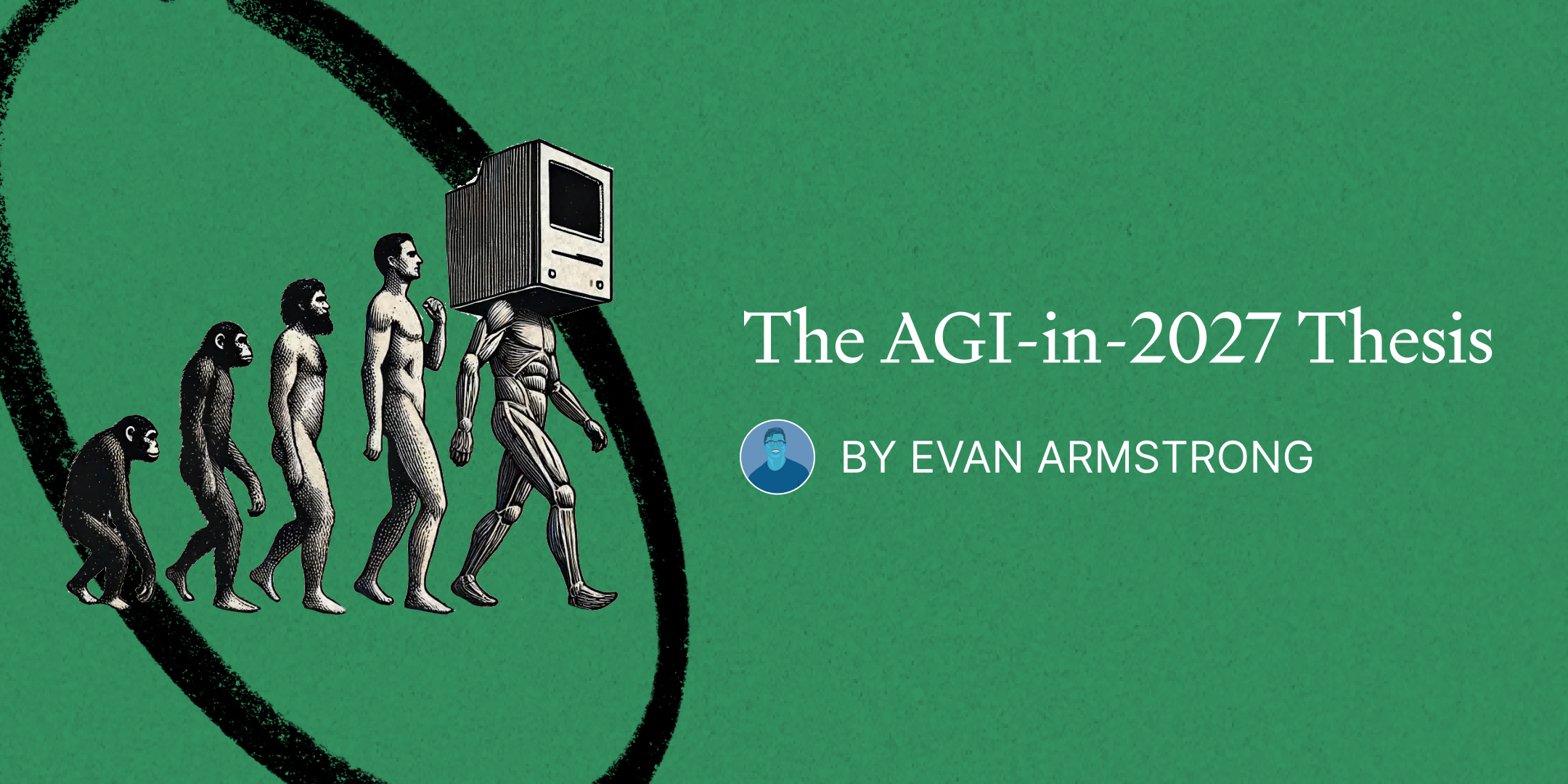The AGI-in-2027 Thesis

🌈 Abstract
The article discusses the two main perspectives among technologists on the future of artificial intelligence (AI). One view sees AI as an iterative, useful improvement that will enable new software use cases. The other, more extreme view believes that AI will eventually become artificial general intelligence (AGI) and self-improve to be much smarter than humans. The article examines the arguments and assumptions behind this second, AGI-focused perspective.
🙋 Q&A
[01] The Two Perspectives on AI
1. What are the two main perspectives among technologists on the future of AI? The article outlines two main perspectives:
- The first sees AI as an iterative, genuinely useful improvement that will enable new software use cases.
- The second, more extreme view believes that AI will someday become artificial general intelligence (AGI) and self-improve to be much smarter than humans.
2. What are the key points of the "more extreme" AGI-focused perspective?
- This view believes that AI will eventually achieve AGI and then self-improve to be 10 times smarter than humans.
- There is debate around when this will happen and whether it will empower or kill us.
- The world's top AI companies (OpenAI, Google DeepMind, Anthropic) have AGI as the explicit mission of their organizations.
[02] Analyzing the AGI Thesis
1. What are the three key assumptions underlying the AGI thesis presented in the article? The three key assumptions are:
- Continued logarithmic growth in the capabilities of large language models (LLMs) with each 10x increase in training investment.
- Breakthroughs in "algorithmic efficiency" and "unhobbling" to enable LLMs to conduct AI research and become recursively self-improving.
- The timeline of 2-3 orders of magnitude (OOM) of investment away from achieving AGI.
2. What are the author's main critiques of the "unhobbling" assumption?
- The author argues that planning and reasoning capabilities are fundamentally different from simply scaling up model size and are more dependent on algorithm design, not just increased compute.
- The author also questions the assumption that an LLM could "know everything about you", as that would require access to a company's full data, which faces practical enterprise challenges.
3. How does the author view the timeline and certainty of the AGI thesis?
- The author believes the scientific progress required for AGI is not just a function of capital allocations, but also genuine innovation, which is hard to predict.
- The author sees the "straight line" extrapolation to AGI by 2027 as presumptuous and not strongly supported.
- The author argues that major capability gains are not just a matter of more compute, contrary to the AGI thesis.
[03] Broader Implications and Perspectives
1. What are the author's views on the broader implications and perspectives around the AGI thesis?
- The author acknowledges the importance of considering the potential impacts of AGI, such as on statecraft and energy usage, as discussed in the rest of the 165-page essay.
- However, the author questions the author's motivations for distributing these ideas in an inflammatory manner, suggesting he may be trying to raise interest in his new investment firm.
- The author argues that the smartest approach is to focus on basic research, thoughtful experimentation, and hard work, rather than just drawing "straight lines on a chart."
- The author emphasizes that AGI is not destiny, but a choice, and it is up to us to ensure we put in the necessary effort to get it right.